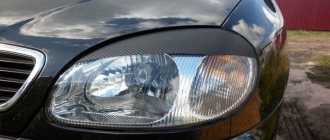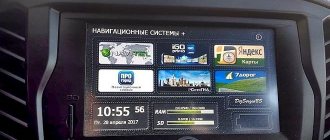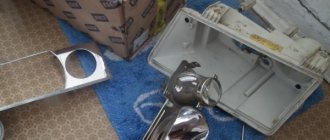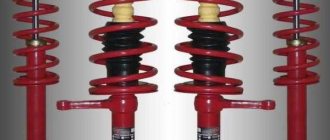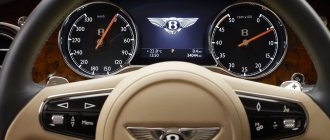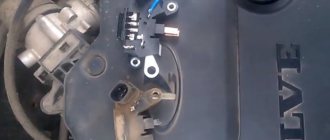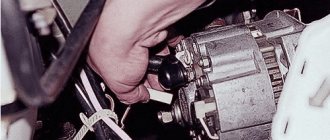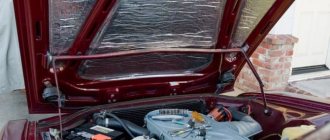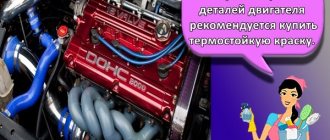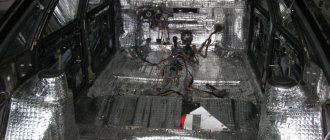The electronic engine control unit (ECU, ECM) is the brain center of the car. It receives data from a variety of sensors in the engine compartment, intake and exhaust systems, interprets this data using maps embedded in its program, monitors faults and sends control signals to actuators and other systems.
Some ECU functions:
- controls fuel injection;
- adjusts the throttle position;
- controls ignition;
- analyzes the composition of exhaust gases;
- controls valve timing;
- identifies malfunctions and informs the driver about them.
What is ECU firmware
This is a control program written into the block itself. Engine ECU programming is initially done by the manufacturer. However, the stock version is not adapted to specific climatic conditions and driving style. Moreover, on modern cars power is limited by software due to environmental requirements. Flashing an ECU is a change in parameters in the factory program that allows you to bypass such restrictions.
An analogue of ECU firmware is installing a different operating system on a smartphone.
Pros:
- Power and torque will increase;
- Acceleration will become faster;
- If desired, a faulty catalyst or particulate filter is switched off;
- Improves engine performance when the air conditioner is on;
- The gas pedal responds faster;
- Turbo lag is smoothed out.
Where to flash the ECU
The ADAKT company is fundamentally against removing a correctly working particulate filter and catalyst, especially in services that offer to do this for free.
Minuses:
- You need to refuel with high-quality fuel;
- The burden on the environment increases if toxicity standards are lowered.
What flashing can do
Many of the most experienced engineers are working on the development of the car and synchronizing the operation of all its components, and it is natural to assume that they have chosen the most optimal option for electronic control of the car. Thus, any, even minor, intervention in the operation of the control unit will lead to changes in the software settings and in the operation of the entire vehicle. Unfortunately, such changes can bring not only the desired improvements, but also obvious negative consequences for the operation of the entire car.
Let's start with the obvious advantages.
- Along with improving the dynamic qualities of the car, the sensitivity of the accelerator pedal also increases, and the entire process of driving the vehicle becomes much easier.
- The car accelerates much faster, which makes it easier to maneuver in dense traffic.
- The car becomes more fuel efficient.
- Engine performance becomes much better even when the car is on, etc.
Since chip tuning involves approximately 1,300 calibrations of various directions, there will be quite a lot of changes. Unfortunately, in addition to the desired positive changes, such interference in the electronic control of vehicle systems also has its negative sides.
The process of self-firmware ECU
Disadvantages of intervention in the ECU.
- When changing ECU parameters, you need to understand that the vehicle's life will definitely decrease by no less than 4%.
- Before you begin calibration, you will need to reset all factory firmware. Quite often, owners resort to changing the fuel supply setting, and the mixture can become either too rich or too lean. If the ECU flashing is not of good quality, you can get into trouble with a frequently clogged catalyst, burnt-out valves in the piston, a worn-out crankshaft, and even a completely broken engine.
- If the catalyst sensor is disabled during flashing, then in the event of a breakdown, the car owner will only know about it when the exhaust system is completely clogged, which in turn will lead to complete engine breakdown.
- The worst thing that often happens immediately after poor-quality chip tuning is a failed automatic transmission. Repairing this unit is an extremely expensive procedure.
The list of possible troubles can be continued, and before you start making such improvements, you should think carefully.
What changes in custom ECU firmware
Depending on the purposes of chip tuning, when reprogramming the engine ECU, more than 1000 calibrations can be made. Most often the changes concern:
- fuel supply, enrichment thresholds, fuel supply restrictions during acceleration;
- boost pressure on turbocharged engines in economy and power modes;
- hardware configuration bytes and error mask;
- torque, fuel supply and boost limits;
- operating algorithm of the mode manager.
What you need for firmware
In order to flash the electronic engine control unit you will need several essential things.
Attention: if a car enthusiast has never carried out brain flashing operations, then it is not recommended to do it yourself. Since an incorrectly performed procedure can lead to catastrophic consequences, such as the ECU failing, the car will not start, or even an electronic part will fail and require replacement, which in some cases will significantly hit the owner’s wallet.
Self-reflashing the ECU will require the following resources:
- A laptop, tablet PC or a special computer used by experienced auto electricians and tuning specialists.
- Software according to the vehicle.
- Directly the firmware software of the corresponding version.
- OBD II or K-line cable. Recently, in order not to carry wires, wireless connection via Bluetooth channels has become popular.
- Well, the last, important factor is the presence of brains and hands growing from the right place.
How to flash an ECU
- Chip tuning begins with engine diagnostics. There is a rule: you cannot “repair” a faulty car.
- The original ECU firmware or identifiers are read. It is upgraded by a calibrator or a ready-made tuning version is selected.
- Next, the chip tuner records the modified version. Some units are flashed without removal and disassembly via the OBD2 diagnostic connector. Other ECUs come with built-in protection, so to reprogram you have to remove, disassemble and bypass the protection.
- If the ECU was removed, it is reinstalled and diagnostics are carried out for errors. Afterwards the owner makes a test drive.
Content:
- What is needed for independent chip tuning
- Advantages of do-it-yourself chip tuning
- Disadvantages of do-it-yourself chip tuning
Every year there are more and more people who want to save money and do engine chip tuning with their own hands. Having read and watched enough videos on the Internet that the procedure for flashing an ECU is a breeze for 15 minutes for a highly qualified specialist, they are ready to rush into battle, with the phrase “the worse I am, I will do everything myself.” There are especially many people who want to chip their car by uploading firmware via the OBD2 diagnostic connector, so to speak, without disassembling the unit and directly connecting it to the tracks on the board or processor. If ECU programming is complex, then the number of people willing to flash it themselves decreases exponentially.
Let's look at a clear example of one of these instructions for independent chip tuning from Alyosha's Auto Electrician, which tells us that even a person who works with electrics can make a banal mistake and burn out the ECU
, not to mention a simple car owner.
It’s good that the old VAZ block is not expensive and replacing it with a new one is not difficult. But there are blocks for foreign-made cars that cost 50 thousand rubles or more, and in order to make a new block a friend of the car, you need to go through a quest that is difficult for experienced craftsmen with special equipment to do, but for a simple “Uncle Vasya” in the garage not at all within the power of a simple car owner. It’s worth thinking carefully about this, whether it’s worth saving on this and what this saving can result in, or whether you should not do chip tuning yourself, but turn to specialists. If you have decided to program the ECU yourself, we will try to tell you what you need.
Why you shouldn't flash the ECU yourself
To achieve results without harming the car, the chip tuner must have knowledge, qualifications and experience. Special equipment and fresh, and most importantly suitable for a specific unit, firmware from proven calibrators are required.
Some car owners try to make reprogs with their own hands to save money. But even if you have the necessary equipment, the savings are minimal - you still have to buy the firmware itself. If you do not plan to professionally engage in chip tuning, it is better to trust the official partners of ADACT. They will carry out diagnostics, select the optimal firmware version and install it with a guarantee.
Disadvantages of do-it-yourself chip tuning
- It takes a lot of extra time to understand how to do it right;
- If you do it wrong, you can end up with a lot of money;
- In some cases, you will have to look for specialists who will fix everything;
- When choosing firmware from free sources, you can get a negative result;
- The cost of purchasing equipment can exceed the cost of chip tuning from a specialist several times.
Naturally, whether to do chip tuning yourself or not is everyone’s choice. But we still do not recommend carrying out this procedure yourself, without sufficient knowledge for this. Otherwise, it may end in repairs, or simply wasted time and money. We believe that it is most advisable to contact chip tuning specialists. If you decide to program your car’s ECU yourself, we can calibrate your factory firmware to suit your needs in compliance with all technical requirements.
Order firmware from us
Advantages of tuning firmware from ADACT
- If you get chipped from our partners, you will be given a 10-day test drive;
- Of the Russian calibrators, only ADACT have been certified according to GOST R ISO 9001-2011 standards;
- Calibrators have more than 14 years of experience. Specialization - civilian tuning (for ordinary drivers, not racers). You are guaranteed to have a working and proven program installed. A special certificate will confirm this;
- Favorable prices.
To flash the engine ECU with a guaranteed result, contact your nearest ADACT partner.
Car firmware for Euro 2
As part of the Geneva Agreement on March 20, 1958, regulations of the United Nations Economic Commission for Europe (UNECE Regulations) were adopted to ensure road safety and environmental protection. Countries that have acceded to the Agreement use the EEC Rules for certification tests of road vehicles.
In the Russian Federation, before serial production, the car undergoes certification in terms of compliance with its safety conditions and environmental requirements. Until 2004, injection cars were produced mainly without assigning an environmental class and, in terms of exhaust composition, they belonged to the “Russian Norms” group.
Since February 17, 1987, the Russian Federation has been included in the list of Contracting Parties to the 1958 Agreement and on this basis environmental requirements are imposed on the production of automobiles in accordance with the EEC Rules.
In mid-2004, VAZ cars began to be equipped with catalysts that help reduce harmful exhaust gases. An oxygen sensor is installed in front of the catalyst, which controls the fuel mixture in a closed loop together with the mass air flow sensor. The car began to belong to the Euro-2 environmental class and, thanks to the new system, the stoichiometric composition of the fuel mixture was automatically maintained.
With the tightening of environmental requirements, the development of new technologies continues to reduce harmful substances, and since 2006, a Euro-3 car has been produced with a second oxygen sensor installed. Located after the catalyst, it performs a diagnostic function and the ECU, receiving information from it about the state of the exhaust, instantly adjusts the fuel supply towards improvement.
What happens if the catalyst is removed from the exhaust system? In this case, the second diagnostic oxygen sensor will show the same values as the first control one. The program, having processed the same information from two sensors and not being able to correct the fuel mixture, will put the system into “emergency” mode and a “check” will light up on the panel.
What is "emergency" mode? When a malfunction occurs, when the parametric characteristics of engine operation go beyond the permissible values, the control unit switches its operation to table mode, ignoring the readings of the faulty sensor and until the malfunction is eliminated, the car is operated according to the table, in “emergency” mode.
Now it’s easy to answer the question, “is it necessary to reflash the brain after removing the catalyst”? Due to the fact that after removing the catalyst, the diagnostic oxygen sensor will repeat the signals of the control sensor, there is a need for chip tuning. You can have your car microchipped to ensure that it is transferred from Euro-3 to Euro-2 standards either yourself or by contacting car service specialists. Modern cars are equipped with protected control units and complex hardware circuitry, so is it worth the risk without special adapters to independently solve this issue. The most acceptable option is to contact a car service.
It should be noted that cars with firmware with the second oxygen sensor turned off operate more confidently, have stable idling and improve its dynamic performance.
